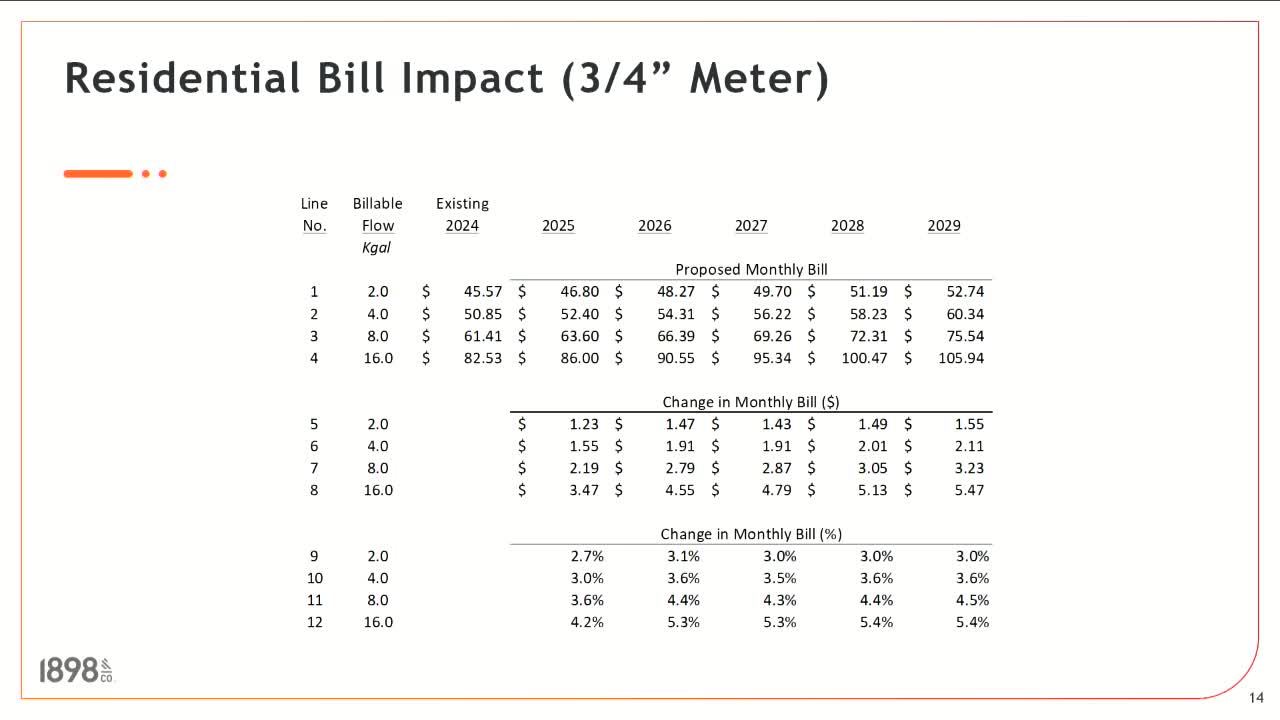Proposed rate changes spark debate over utility costs
August 12, 2024 | Joplin City, Jasper and Newton County, Missouri
This article was created by AI summarizing key points discussed. AI makes mistakes, so for full details and context, please refer to the video of the full meeting. Please report any errors so we can fix them. Report an error »

In a recent government meeting, officials discussed proposed rate adjustments for residential, commercial, and industrial water users, highlighting the financial implications for each category. The proposed changes indicate that a typical residential customer, using approximately 4,000 gallons per month, would see their bill rise from $50.85 to $52.40 in 2025, reflecting a monthly increase of $1.55. The adjustments are designed to ensure that higher volume users bear a larger share of the cost, with percentage increases in bills becoming more pronounced for those consuming more water.
For commercial users, the discussion revealed a diverse range of consumption patterns, with an average usage of 25,000 gallons per month. The proposed rate structure aims to balance the financial burden across different user classes, with smaller users experiencing less impact compared to larger consumers. Industrial users, who can use up to 900,000 gallons monthly, will also see varying increases based on their specific usage and the implementation of a pretreatment fee.
The meeting also addressed the need for stakeholder engagement, particularly with industrial customers and communities involved in intermunicipal agreements, to ensure transparency and understanding of the proposed changes. Officials emphasized the importance of public education regarding the adjustments, which are expected to align with broader regional trends of rate increases.
Councillors raised concerns about the equity of the rate structure, particularly for residential users on fixed incomes. Suggestions were made to consider a more volumetric-based pricing system in the future, which could alleviate some of the financial pressure on lower-volume users. The discussion also touched on the potential implications of privatizing the utility, with officials noting that such a move could lead to a loss of local control and potentially higher rates due to the need for private entities to earn a return on investment.
As the city prepares to finalize the proposed rate adjustments, officials plan to present their findings in an ordinance for consideration and adoption, ensuring that the community remains informed and engaged throughout the process.
For commercial users, the discussion revealed a diverse range of consumption patterns, with an average usage of 25,000 gallons per month. The proposed rate structure aims to balance the financial burden across different user classes, with smaller users experiencing less impact compared to larger consumers. Industrial users, who can use up to 900,000 gallons monthly, will also see varying increases based on their specific usage and the implementation of a pretreatment fee.
The meeting also addressed the need for stakeholder engagement, particularly with industrial customers and communities involved in intermunicipal agreements, to ensure transparency and understanding of the proposed changes. Officials emphasized the importance of public education regarding the adjustments, which are expected to align with broader regional trends of rate increases.
Councillors raised concerns about the equity of the rate structure, particularly for residential users on fixed incomes. Suggestions were made to consider a more volumetric-based pricing system in the future, which could alleviate some of the financial pressure on lower-volume users. The discussion also touched on the potential implications of privatizing the utility, with officials noting that such a move could lead to a loss of local control and potentially higher rates due to the need for private entities to earn a return on investment.
As the city prepares to finalize the proposed rate adjustments, officials plan to present their findings in an ordinance for consideration and adoption, ensuring that the community remains informed and engaged throughout the process.
View full meeting
This article is based on a recent meeting—watch the full video and explore the complete transcript for deeper insights into the discussion.
View full meeting
